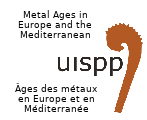In the field of archaeology, the study of 'gender' can be a complex and intricate subject due to the diverse interpretations of the term, which often causes confusion among scholars regarding whether they are referring to biological sex or 'cultural gender.' However, it is possible that the biological sex of individuals buried in the past may not reflect their gender identity or personhood at all.
In the Early Bronze Age, an individual's age may have played a greater role in shaping their concept of personhood than their biological sex. By examining burial practices in the broader river landscape of the Rhine, my goal is to uncover the significance of biological sex and age in these practices and how they relate to a broader understanding of personhood.

 PDF version
PDF version
